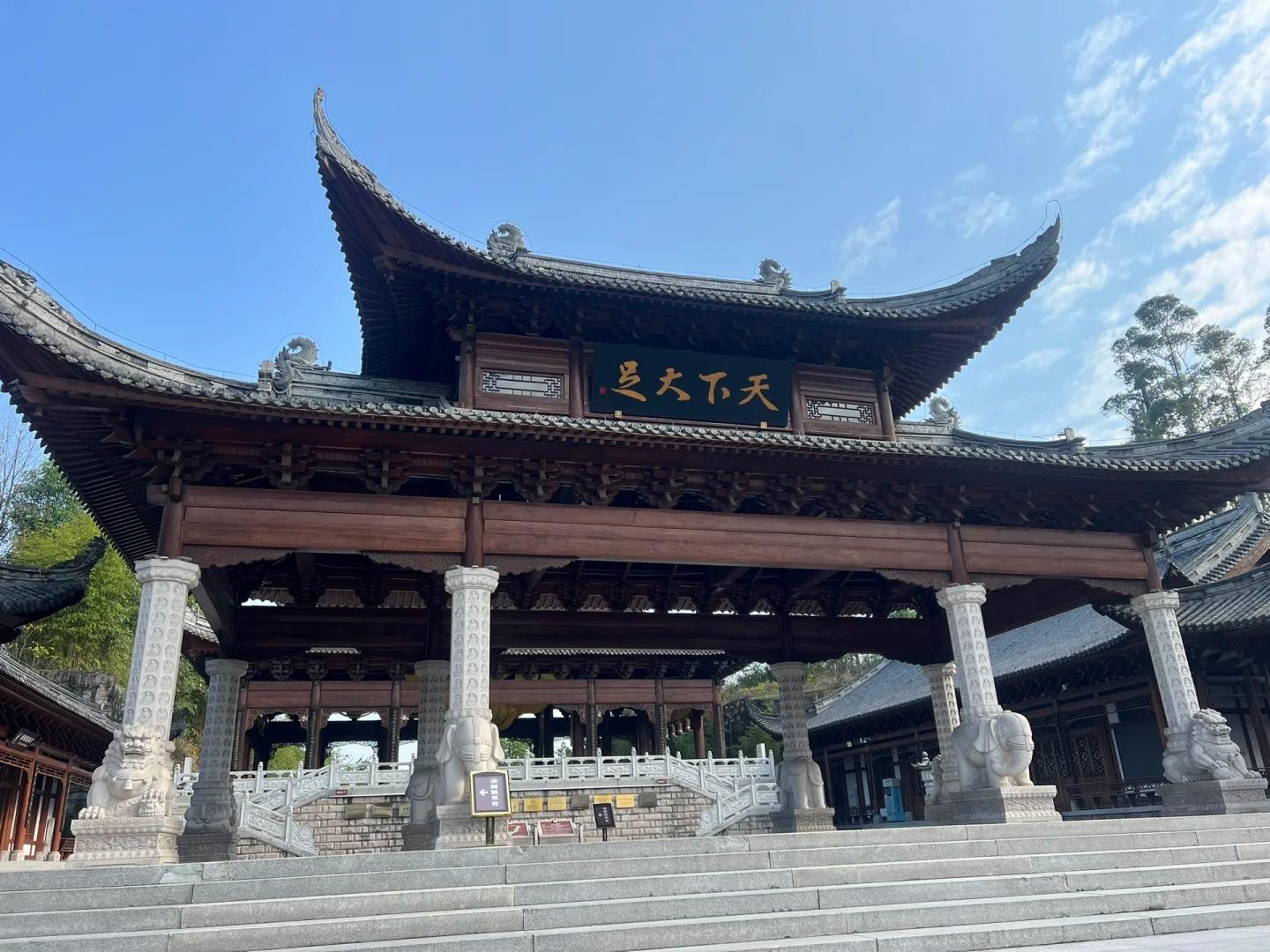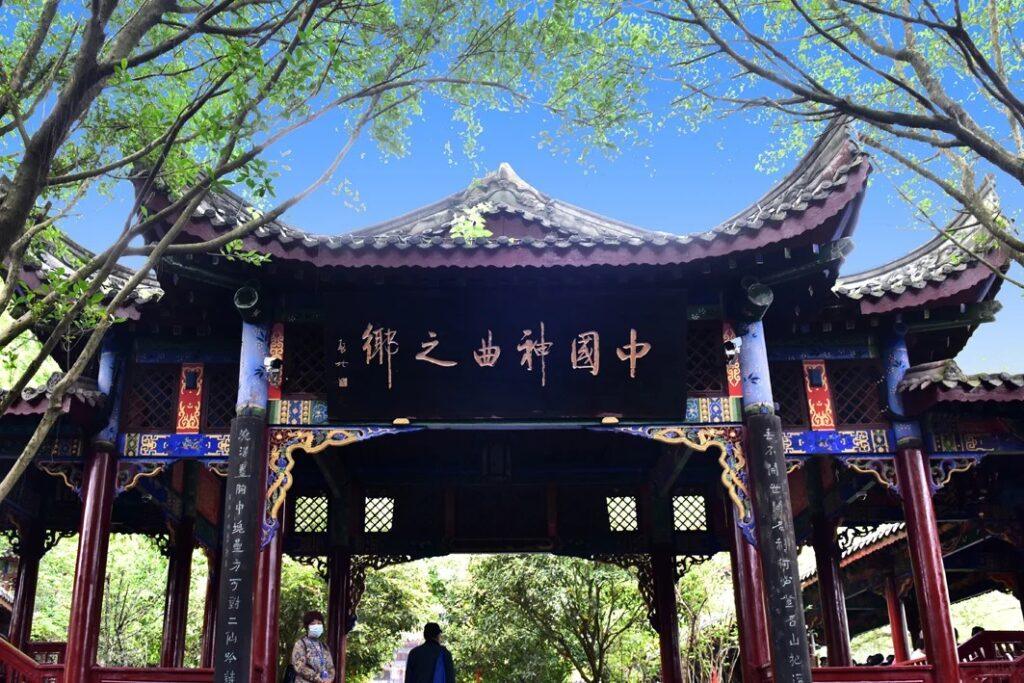Visiting Information
| Information | Details |
|---|---|
| Chinese Name | 大足石刻 (Dàzú Shíkè) |
| Location and Address | Dazu District, Chongqing Municipality, China |
| Opening Time/Hours | 8:30 AM – 5:30 PM (April to October); 8:30 AM – 5:00 PM (November to March) |
| Entrance Fee | 170 CNY (Peak Season: April 1 to October 31); 135 CNY (Off-Season: November 1 to March 31) |
| How to Get There | By Bus: Take the bus from Chongqing Caiyuanba Bus Station to Dazu Bus Station, then take a local bus to the scenic area By Taxi: About 2.5 hours drive from downtown Chongqing |
| Best Time for Visit | Spring (March to May) and Autumn (September to November) for pleasant weather |
| Contact Info | +86 23 4328 4095; [email protected] |
Overview
The Dazu Rock Carvings are a series of Chinese religious sculptures and carvings located in Dazu District, Chongqing, China. These remarkable rock carvings date back to the 7th century CE and are renowned for their aesthetic quality, rich diversity of subject matter, and the insights they provide into everyday life in ancient China. The carvings showcase a harmonious synthesis of Buddhism, Taoism, and Confucianism, making them a unique testament to Chinese religious and philosophical traditions.
Historical Background
The creation of the Dazu Rock Carvings began during the Tang Dynasty (618-907) and continued through the Song Dynasty (960-1279), reaching its peak during the late Tang and Five Dynasties period (907-965). The carvings were primarily the work of local artisans and reflected the spread of Buddhism in China and its integration with local traditions. One of the most notable contributors was Zhao Zhifeng, a Buddhist monk who dedicated 70 years of his life in the late 12th century to creating the remarkable carvings at Baodingshan, the largest and most important of the Dazu sites.
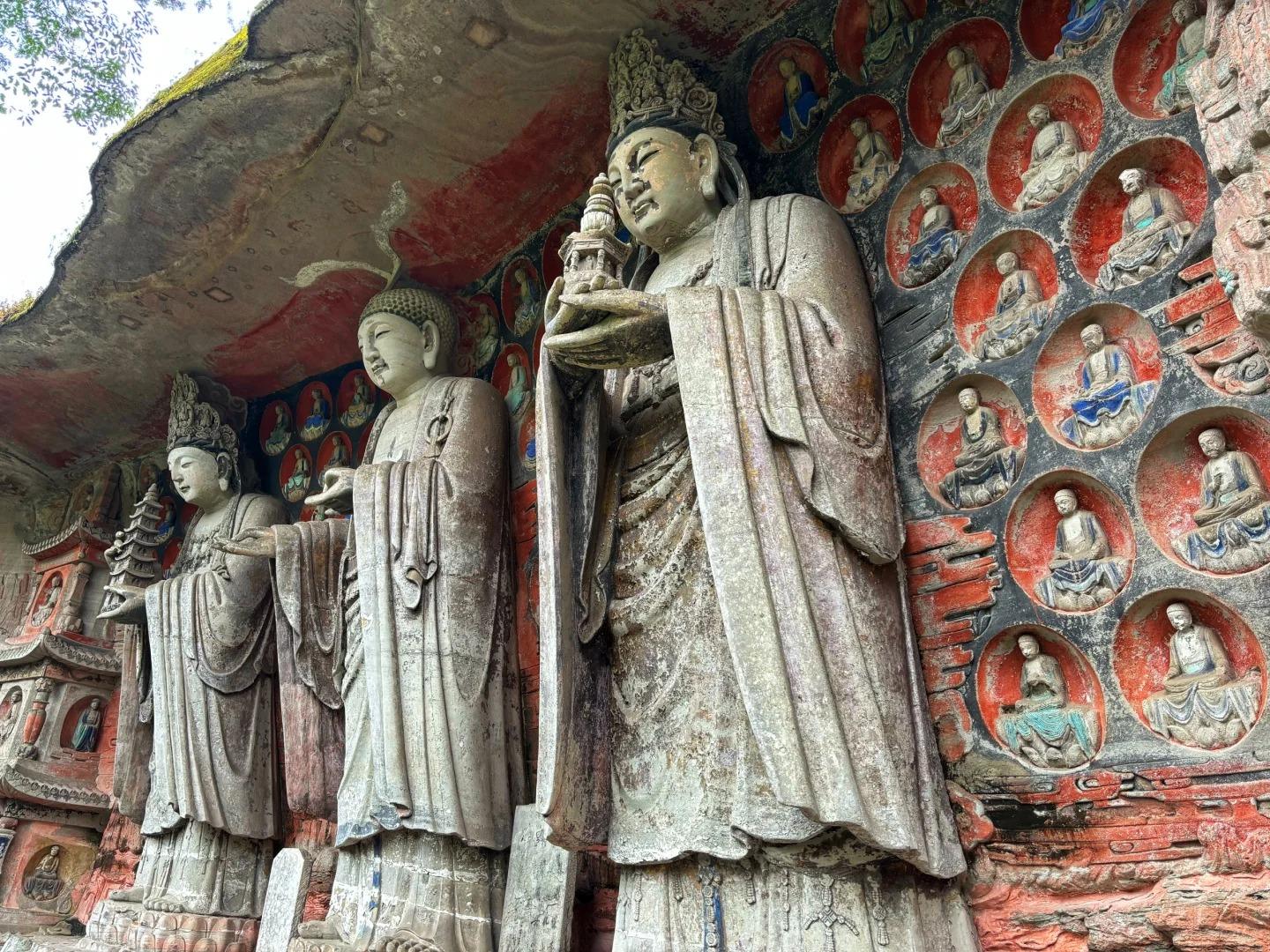
Architectural Features
- Baodingshan: This is the most renowned site among the Dazu Rock Carvings. It features a horseshoe-shaped valley with cliffs on three sides, adorned with intricate carvings that tell Buddhist stories and depict religious scenes. The site is unique for its narrative style, with carvings arranged sequentially to illustrate Buddhist teachings. The centerpiece is a 31-meter-long reclining Buddha, symbolizing Buddha’s entry into nirvana.
- Beishan: This site contains over 10,000 carvings dating from the 9th to the 13th centuries. The carvings here are known for their delicate craftsmanship and diverse themes, including Buddhist, Taoist, and Confucian subjects. Beishan is particularly noted for its depictions of everyday life in ancient China, providing valuable historical insights.
- Nanshan: The carvings at Nanshan date mainly from the Song Dynasty and feature a unique blend of Buddhist and Taoist imagery. This site is known for its large reclining Buddha statue and intricate depictions of Taoist deities. The carvings here showcase the syncretism of Chinese religious thought during this period.
- Shizhuanshan: This site is notable for its harmonious integration of Buddhist, Taoist, and Confucian themes. The carvings here are smaller in scale compared to other sites but are exquisitely detailed. They provide a comprehensive view of the religious and philosophical landscape of Song Dynasty China.
Cultural Importance
The Dazu Rock Carvings are of immense cultural significance, representing a pinnacle of Chinese rock art. They provide invaluable insight into the religious, social, and artistic life of China from the 9th to the 13th centuries. The carvings are particularly important for their depiction of the synthesis of Buddhism, Taoism, and Confucianism, reflecting the unique development of Chinese religious thought. Their artistic quality and the scale of the project also demonstrate the high level of craftsmanship and organization in medieval China. In 1999, UNESCO recognized the Dazu Rock Carvings as a World Heritage Site, affirming their outstanding universal value to human culture and history.
Surrounding Attractions
- Dazu Museum: Located near the Beishan site, this museum houses artifacts discovered during the excavation and preservation of the rock carvings. It provides valuable context for understanding the history and significance of the carvings, displaying statues, steles, and other relics from the Tang and Song dynasties. The museum’s collection includes over 5,000 cultural relics, offering visitors a comprehensive view of the artistic and cultural achievements of the Dazu area.
- Longevity Village: This traditional Chinese village, located near the Dazu Rock Carvings, is known for its high number of centenarians. Visitors can explore the village to learn about traditional Chinese lifestyle and longevity secrets, providing a complementary cultural experience to the rock carvings. The village offers insights into local customs, traditional architecture, and the simple lifestyle that is believed to contribute to the longevity of its residents.
- Beishan Old Street: This historic street near the Beishan carvings offers a glimpse into traditional Chongqing architecture and culture. Visitors can enjoy local cuisine, shop for souvenirs, and experience the ambiance of an ancient Chinese town. The street is lined with well-preserved buildings from the Ming and Qing dynasties, showcasing the architectural styles of different historical periods.
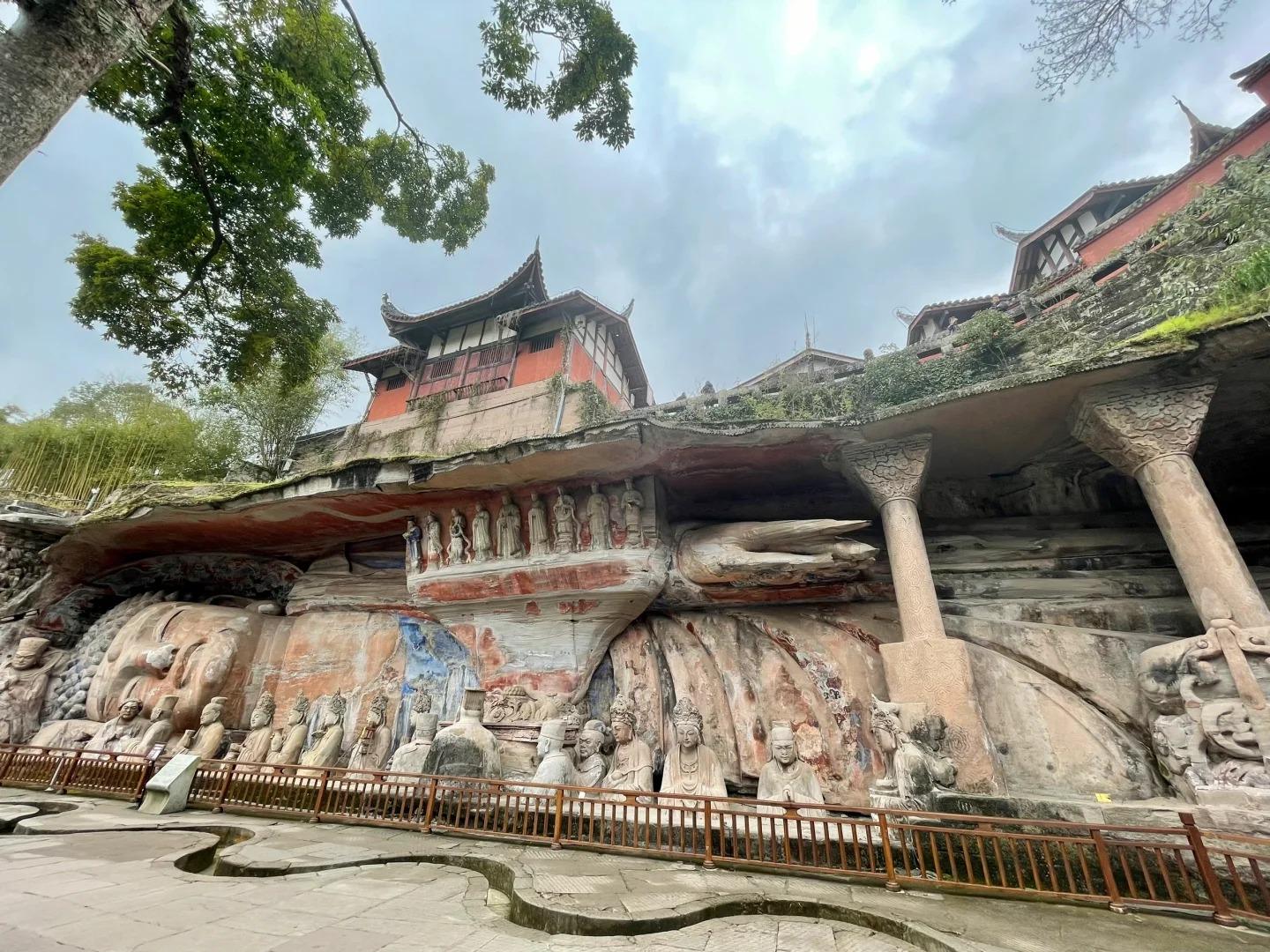
Photography Opportunities
- Baodingshan Panorama: The horseshoe-shaped valley of Baodingshan offers stunning panoramic views of the entire carving complex. Early morning or late afternoon light can create dramatic shadows that enhance the three-dimensional quality of the carvings. The interplay of light and shadow on the rock face provides excellent opportunities for capturing the depth and detail of the sculptures.
- Detail Shots of Carvings: The intricate details of the carvings provide excellent opportunities for close-up photography. Focus on the expressive faces, detailed clothing, and symbolic elements to capture the artistry of the sculptures. Macro lenses can be particularly effective in highlighting the fine craftsmanship and weathered textures of the ancient rock surfaces.
- Reclining Buddha at Nanshan: The large reclining Buddha statue at Nanshan is a popular subject for photographers. Try different angles to capture the scale and serenity of this impressive sculpture. The statue’s serene expression and the surrounding natural landscape offer opportunities for both wide-angle and detail shots.
- Interplay of Light and Shadow: Throughout the day, the changing light creates different effects on the carvings. Experiment with timing to capture how sunlight and shadow interact with the rock surfaces and carved figures. Early morning and late afternoon often provide the most dramatic lighting conditions, enhancing the depth and dimensionality of the carvings.
Modern Importance
- Cultural Heritage Preservation: The Dazu Rock Carvings serve as a focal point for efforts in cultural heritage preservation in China. Ongoing conservation work at the site provides valuable insights and techniques for preserving ancient rock art, benefiting similar sites worldwide. The preservation efforts here have become a model for other heritage sites, combining traditional methods with modern technology to protect these invaluable artifacts for future generations.
- Tourism and Local Economy: As a UNESCO World Heritage Site, the Dazu Rock Carvings attract numerous domestic and international tourists, significantly contributing to the local economy of Dazu District and the broader Chongqing area. The site has become a major driver of tourism-related businesses, including hotels, restaurants, and souvenir shops, providing employment opportunities for local residents and stimulating economic growth in the region.
- Educational Resource: The carvings serve as an important educational resource for students and researchers studying Chinese history, art, religion, and culture. They provide tangible evidence of the philosophical and religious syncretism that characterized medieval Chinese thought. Schools and universities often organize field trips to the site, and it has become a valuable resource for academic research in various fields, including art history, religious studies, and archaeology.
- Artistic Inspiration: The Dazu Rock Carvings continue to inspire contemporary artists, both in China and internationally. Their unique style and iconography influence modern interpretations of traditional themes in various art forms. Many artists visit the site to study the techniques and compositions used by ancient sculptors, incorporating these influences into their own work and helping to keep traditional Chinese art forms alive in the modern world.
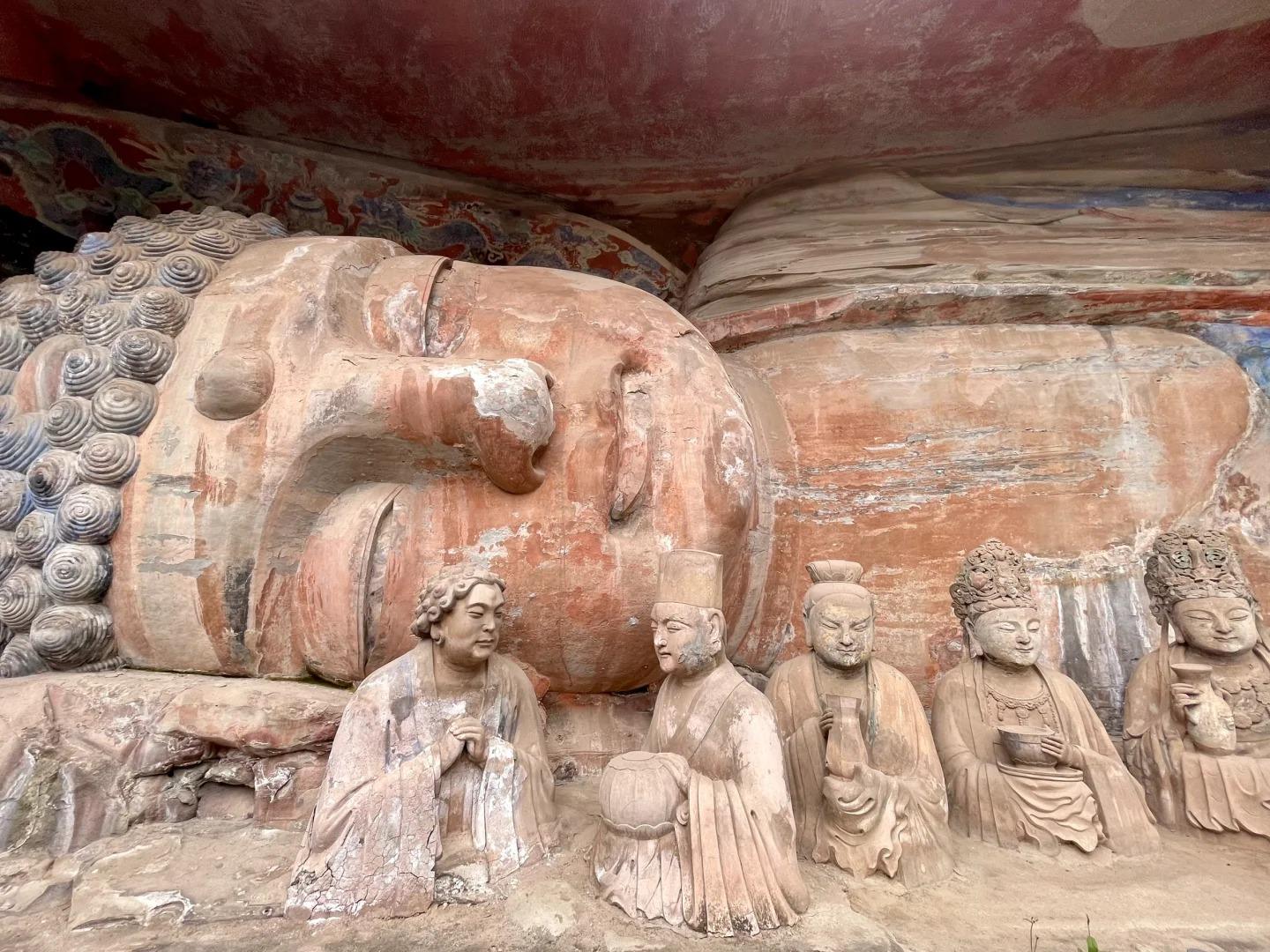
FAQ
- What are the Dazu Rock Carvings famous for?
The Dazu Rock Carvings are famous for their exceptional artistic quality, rich diversity of subject matter, and their representation of the harmonious synthesis of Buddhism, Taoism, and Confucianism in Chinese culture. They are also renowned for their well-preserved state and the insights they provide into daily life in medieval China. - What’s inside the Dazu Rock Carvings?
The Dazu Rock Carvings consist of tens of thousands of rock carvings and sculptures spread across several sites. These include religious figures from Buddhism, Taoism, and Confucianism, as well as scenes from daily life, all intricately carved into cliff faces and cave walls. - Are the Dazu Rock Carvings free?
No, the Dazu Rock Carvings are not free to visit. There is an entrance fee that varies depending on the season, with peak season (April to October) being more expensive than off-season (November to March). - Are the Dazu Rock Carvings worth visiting?
Yes, the Dazu Rock Carvings are definitely worth visiting. As a UNESCO World Heritage Site, they offer a unique glimpse into Chinese religious art and history. The scale, detail, and preservation of the carvings make them an impressive and educational attraction. - What to do in the Dazu Rock Carvings?
At the Dazu Rock Carvings, you can explore the various carving sites, particularly Baodingshan and Beishan. You can admire the intricate carvings, learn about Chinese religious history and art, take photographs, and possibly join a guided tour for more in-depth information. The nearby Dazu Museum also offers additional context and artifacts related to the carvings. - How do I get to the Dazu Rock Carvings in the local city?
To get to the Dazu Rock Carvings from Chongqing city:
1. By Bus: Take a bus from Chongqing Caiyuanba Bus Station to Dazu Bus Station (about 2-3 hours), then take a local bus to the scenic area.
2. By Car or Taxi: It’s about a 2.5-hour drive from downtown Chongqing to Dazu District.
3. Organized Tour: Many travel agencies in Chongqing offer day tours to the Dazu Rock Carvings. - How to visit the Dazu Rock Carvings?
To visit the Dazu Rock Carvings:
1. Plan to spend a full day to explore the main sites.
2. Start with Baodingshan, the largest and most impressive site.
3. Visit Beishan for its diverse themes and delicate craftsmanship.
4. If time allows, explore other sites like Nanshan and Shizhuanshan.
5. Wear comfortable walking shoes as there’s a lot of walking involved.
6. Consider hiring a guide or using an audio guide for better understanding of the carvings.
7. Visit the Dazu Museum to gain more context about the carvings and their history.
8. Remember to bring water, especially during summer months, as it can get quite hot.



